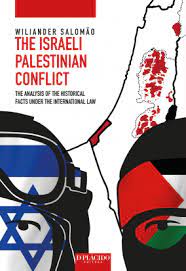On Saturday, 7 October a Jewish sabbath day, the end of the week long Jewish festival of Sukkot, and a day after the 50th anniversary of the Yom Kippur War — Hamas and other Palestinian armed groups launched Operation al-Aqsa Flood, a coordinated assault consisting of land and air attacks into multiple border areas of Israel. It is at 6am, an extensive air assault involving rockets was launched into the coastal towns of Ashdod and Ashkelon and as far north as Tel Aviv (approximately 70 kilometers north of Gaza). It is estimated that between 3-5,000 rockets were launched during that first day.
An estimated 1,000 Hamas militants also breached the security barrier at several positions.1AP, Israel declares war, bombards Gaza and battles to dislodge Hamas fighters after surprise attack, 8 October 2023 Gaza has seven official border crossings, of which only three are operational.
The seven border crossings of Gaza, 15 June 2022 Hamas reportedly breached the borders initially by sending elite troops in via hang gliders, and those soldiers then began to dismantle the electric fences and walls using explosives. Bulldozers were reportedly then used to create space for more fighters to Israel in several places Following the entry attack.
Meanwhile, when the IDF announced Operation Iron Swords to retake territory from Hamas, fighting broke out at multiple locations stretching along the border between Gaza and Israel, including in the border town of Sderot, where Hamas militants seized the local police station. Clashes between the IDF and Hamas continued through Monday, 9 October, as militants holed up in several locations east of Gaza engaged in gun battles with Israeli forces.
The IDF began to strike compounds believed to house Hamas leadership in the Gaza Strip, as well as civilian areas. Israeli fighter jets are reported to have hit over 1,000 targets, including the headquarters of a radio station, residential buildings, and mosques. Gaza hospital deluged as Israel retaliation kills and wounds hundreds, 9 October 2023 Air strikes leveled most of the town of Beit Hanoun, situated in Gaza’s northeast corner. An airstrike on market area in the Jabalia refugee camp, which lies just north of Gaza city, reportedly killed over 50 people on 9 October.
On that very, outside of Gaza, clashes were also reported in the West Bank. At least 11 people were killed in the fighting involving three armed clashes between Palestinian militants and Israelis, two attempted knife attacks, and shooting at unarmed Palestinians engaged in rioting. On Sunday and Monday, the IDF and the Lebanese Hezbollah also exchanged artillery fire across the border between Israel and Lebanon.
Palestinian Islamic Jihad (PIJ) fighters attempted to infiltrate into Israel from the northern border with Lebanon on Monday, with Israel striking the area with helicopters and killing a number of militants. France 24, ‘Israel accused of killing Hezbollah member in border escalation,’ 9 October 2023 Israeli authorities prepared for war shortly after the attacks. Up to 300,000 reservists were mobilized, while several settlements located close to the border with Gaza were evacuated.5Reuters, Israel on war footing, Hamas threatens to kill captives, 9 October2023 On Sunday, the IDF formally declared war against Hamas, a prelude to a possible ground offensive into Gaza. On Monday, the Israeli defense minister announced a total blockade preventing the entry of food and fuel and cutting off Gaza from electricity supply.
The longstanding history of the Israel and Palestinian conflict is the backdrop for the tensions broadly, but concurrent domestic and regional development.
One possible reason for the timing of the Hamas attack is that there has been a growing normalization of Arab relations with Israel. Saudi Arabia specifically has been on a path to normalizing relations with Israel in order to secure an American defense pact.
The ramifications of this for Hamas and Palestine were clear: Saudi interests will not concede to Palestinian interests to stop normalization, and Hamas senses the Palestinian irrelevance in Israeli-Arab affairs.
Security conditions have worsened in the Palestinian territories for over a year, but mainly in the occupied West Bank. Near daily arrest raids by the Israeli military as part of Operation Break the Wave that started in March 2022 have continued at full force under Israel’s rightwing government, while assaults by Jewish settlers on Palestinian villages and activities of ultranationalist religious groups, such as the storming of the al-Aqsa Mosque, have been on the rise
The territories are governed differently, and this has created some variation in expected outcomes: the West Bank is controlled by the Fatah-led Palestinian Authority under the leadership of Mahmud Abbas, which has denounced armed violence against Israel.
The self proclaimed leader of Palestinian armed resistance Hamas largely controls Gaza, under the leadership of Yahya al-Sinwar. In Gaza, a blockade of 16 years has been in place since Hamas took over the territory in 2007. The Gaza blockade was made permanent in 2007 following the Battle of Gaza, in which Hamas took control of the Gaza Strip and removed Fatah and the Palestinian Authority. Hamas had won elections to form the Palestinian Authority for the strip, but would not accede to the conditions of Israeli recognition.
The border was subsequently closed, and other sanctions were imposed in response. The general situation has been dangerously escalating in the West Bank, with both PIJ and Hamas contributing greatly to the resurgence of militant activity.
The IDF had been heavily deploying its forces to the West Bank to counter the armed groups there, providing an opportunity for Hamas to take advantage of the potential reduction of forces at the border with Gaza.
Umar Abdullahi Jibril,
Maiduguri, Borno state




